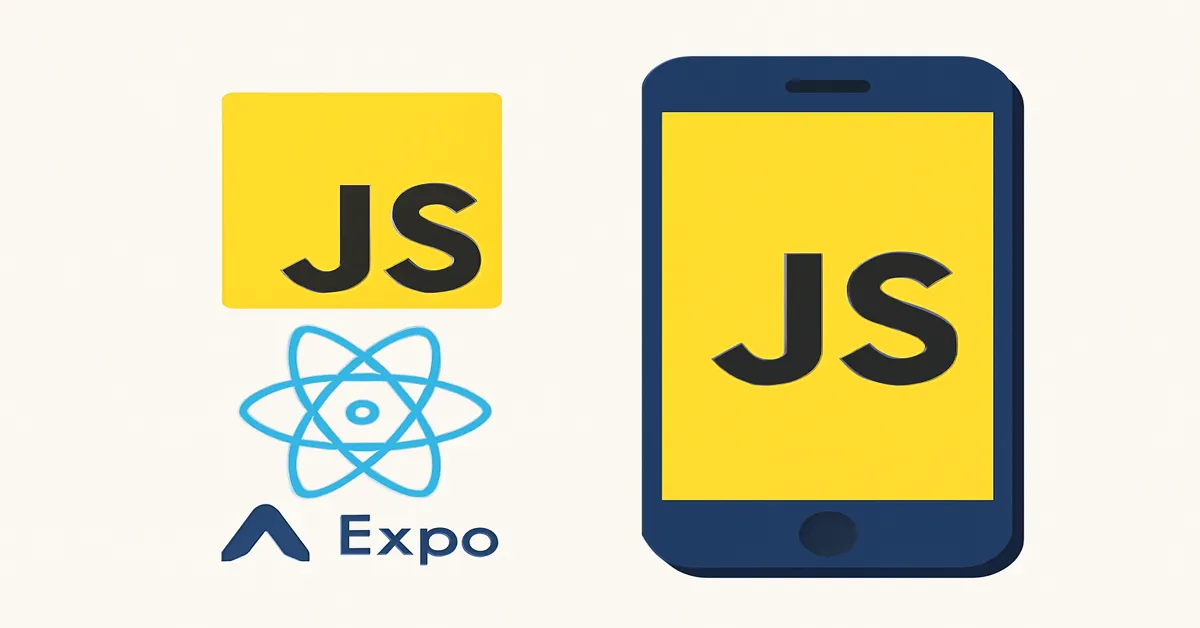In the rapidly evolving landscape of mobile app development, JavaScript has emerged as a surprisingly potent force. Once confined to browser-based interactions and web pages, JavaScript now powers entire mobile applications, bridging the gap between web and native environments. At the heart of this revolution are two leading technologies: React Native and Expo.
These frameworks empower developers to create performant, cross-platform mobile applications using JavaScript — a language many already know and love. By leveraging these tools, teams can deliver rich, native experiences on iOS and Android without duplicating effort or mastering platform-specific languages like Swift or Kotlin.
This article delves deep into how JavaScript drives modern mobile development through React Native and Expo. We explore their origins, technical architectures, strengths, challenges, and how they complement each other to fuel rapid, efficient app creation. Whether you are an experienced developer, a startup founder, or simply curious about mobile tech trends, this detailed exploration sheds light on JavaScript’s transformative role in mobile.
The Rise of JavaScript Beyond the Browser
JavaScript’s dominance on the web is undisputed. According to industry surveys, JavaScript consistently ranks as the most widely used programming language worldwide, powering countless websites and web applications. Yet, its influence extends far beyond browsers.
Thanks to powerful runtime environments and frameworks, JavaScript now runs on servers, desktops, IoT devices, and mobile phones. In mobile development, this evolution has been accelerated by the need to build cross-platform apps efficiently — reducing costs and speeding up time to market.
Native mobile development, traditionally done in Swift (iOS) and Kotlin or Java (Android), often requires separate codebases and skillsets. This fragmentation increases complexity and resource demands. Enter JavaScript-based frameworks, designed to unify development efforts under a single language and toolchain.
React Native: The Foundation of Modern JavaScript Mobile Development
Origins and Philosophy
Introduced by Facebook in 2015, React Native marked a seismic shift in mobile development. It brought the declarative component-based paradigm of React — already beloved in web development — to mobile platforms.
React Native enables developers to write UI components in JavaScript that are compiled to native widgets, ensuring smooth performance and native look and feel. Unlike hybrid apps that run inside WebViews, React Native apps interact directly with native APIs and components.
Core Architecture
React Native consists of three main layers:
- JavaScript Layer: Developers write application logic and UI in JavaScript and JSX.
- Bridge: A communication layer that serializes and transfers messages between JavaScript and native threads.
- Native Layer: Platform-specific components (iOS UIKit, Android Views) that render the UI.
This architecture allows React Native apps to execute JavaScript asynchronously while native components update the UI, offering a responsive experience.
Key Features
- Cross-Platform: Write once, run on both iOS and Android.
- Native Performance: Uses real native components instead of web-based views.
- Hot Reloading: Enables instant feedback during development.
- Rich Ecosystem: Large community, libraries, and third-party modules.
- Access to Native Modules: Developers can write custom native code when necessary.
Development Workflow
React Native development typically involves a JavaScript codebase managed via tools like Metro bundler and integrated with native development environments (Xcode, Android Studio) for debugging and deployment.
Expo: Streamlining React Native Development
What is Expo?
Expo is a free and open-source framework and platform built on top of React Native. It aims to simplify the development and deployment process by providing a set of tools, libraries, and services that abstract much of the complexity in React Native apps.
Launched in 2016 by a team of developers who recognized the steep learning curve of native mobile development, Expo quickly became a popular choice for beginners and professionals alike.
Core Components of Expo
- Expo SDK: A curated collection of APIs and components that work seamlessly across platforms, such as camera access, sensors, push notifications, and media playback.
- Expo CLI: Command-line tools that streamline project creation, development, and build processes.
- Expo Go: A client app available on iOS and Android that allows developers to run and test apps instantly without a full native build.
- Expo Application Services (EAS): Cloud-based build and submission services that automate generating native binaries.
How Expo Enhances React Native Development
- Faster Setup: No need to configure native projects initially — just start coding.
- Over-the-Air (OTA) Updates: Deploy JS and asset updates without resubmitting to app stores.
- Simplified Access to Native APIs: Many common native features are accessible out-of-the-box.
- Managed vs Bare Workflows: Developers can choose between full Expo control (managed) or ejecting to custom native code (bare) if needed.
Expo’s Development Experience
Using Expo, developers can focus on writing JavaScript and JSX, immediately seeing changes on real devices via Expo Go, reducing friction and accelerating iteration cycles.
Comparing React Native and Expo: When to Use What?
While Expo is built on React Native, it’s important to understand their differences to choose the right approach.
| Aspect | React Native | Expo |
|---|---|---|
| Setup Complexity | Requires native tooling setup (Xcode, Android Studio) | Minimal setup, works out-of-the-box |
| Access to Native APIs | Full access, including custom native modules | Access to many native APIs via SDK, limited for custom native code |
| Build Process | Manual native builds and deployments | Cloud build services or local builds via Expo CLI |
| OTA Updates | Requires third-party solutions | Built-in support |
| Flexibility | Maximum flexibility with native code | Easier but some limitations; can eject if needed |
| Ideal For | Large projects needing custom native features | Rapid prototyping, small-to-medium apps, beginners |
Technical Deep Dive: React Native’s Bridge and Performance Considerations
The Bridge: Pros and Cons
React Native’s bridge enables asynchronous communication between JS and native layers, but it can introduce performance bottlenecks, especially when large amounts of data or frequent interactions occur.
New Architecture: Fabric and TurboModules
React Native is evolving with Fabric, a new rendering system aimed at improving UI thread performance by synchronizing rendering between native and JavaScript. TurboModules enhance module loading efficiency by enabling lazy loading.
These advancements address longstanding performance limitations, making React Native apps more responsive and smoother.
Expo’s Role in the Mobile Ecosystem
Expo’s focus on developer experience makes it a powerful tool for startups, education, and rapid MVP creation. Its curated SDK means developers can rely on tested, maintained components instead of piecing together many libraries.
By leveraging cloud build services and OTA updates, Expo reduces time-to-market and operational overhead for app deployments.
Challenges and Limitations
While React Native and Expo have democratized mobile app development, challenges remain:
- Performance Edge Cases: For extremely graphics-intensive or low-latency apps (e.g., games), native development still holds advantages.
- Dependency on Third-Party Libraries: Ecosystem fragmentation can cause maintenance and compatibility issues.
- Platform Inconsistencies: Minor UI and behavior differences can still surface across iOS and Android.
- Native Module Gaps in Expo: Some advanced native capabilities require ejecting from Expo, which adds complexity.
Real-World Success Stories
Companies across industries rely on React Native and Expo:
- Facebook and Instagram: Use React Native components in key features.
- Shopify: Adopted React Native for its mobile apps.
- Discord: Migrated parts of its app to React Native.
- Vogue and Airbnb: Early adopters leveraging Expo for rapid development.
These success stories illustrate JavaScript’s power in delivering performant, scalable mobile experiences.
Getting Started: Building Your First React Native App with Expo
For beginners, Expo offers a gentle onramp:
- Install Expo CLI: bashCopy
npm install -g expo-cli - Create a new project: bashCopy
expo init MyFirstApp - Start the development server: bashCopy
cd MyFirstApp expo start - Scan the QR code with Expo Go on your mobile device and start coding!
This simple workflow contrasts with traditional native setup, making mobile app development accessible to more developers.
The Future of JavaScript in Mobile Development
The trajectory of JavaScript mobile frameworks points toward:
- Greater performance optimizations via React Native’s new architecture.
- More robust tooling and cloud services from Expo and others.
- Deeper integration with native capabilities through improved bridging and modularity.
- Expanding cross-platform reach into new devices and platforms like Windows and macOS.
The community’s vibrant ecosystem ensures continued innovation and adoption.
Conclusion
JavaScript’s entry into mobile development through React Native and Expo has transformed the industry, enabling developers to build powerful, native-like applications using familiar tools and languages. React Native offers unparalleled flexibility and performance potential, while Expo provides an approachable, streamlined experience ideal for rapid development and smaller projects.
Together, they embody the best of modern mobile app development — speed, efficiency, and cross-platform reach — proving that JavaScript is far more than a browser language. For anyone looking to build mobile apps in 2025 and beyond, understanding and leveraging these tools is essential.
Read:
30 Interview Questions on JavaScript: A Comprehensive Guide for Aspiring Developers
Understanding JavaScript Data Types and Variables
JavaScript Control Flow: Using If Statements, Loops, and Switch Cases
FAQs
1. What is React Native, and how does it use JavaScript for mobile apps?
Answer: React Native is a framework developed by Facebook that allows developers to build native iOS and Android apps using JavaScript and React, rendering real native UI components.
2. How does Expo simplify React Native development?
Answer: Expo provides a set of tools and services that abstract native complexity, enabling developers to build, test, and deploy React Native apps quickly without deep native setup.
3. Can I use native device features with Expo?
Answer: Yes, Expo offers many built-in APIs for accessing device features like camera, sensors, and notifications, but for advanced or custom native modules, you may need to eject to a bare workflow.
4. What are the main differences between React Native and Expo?
Answer: React Native requires manual setup and native tooling, offering maximum flexibility, while Expo offers a managed workflow with easier setup and OTA updates but some limitations on native customization.
5. Is JavaScript performance sufficient for mobile apps built with React Native and Expo?
Answer: For most apps, yes—React Native renders native components ensuring good performance, and Expo builds on this. However, very graphics-intensive or low-latency apps may still benefit from fully native development.











